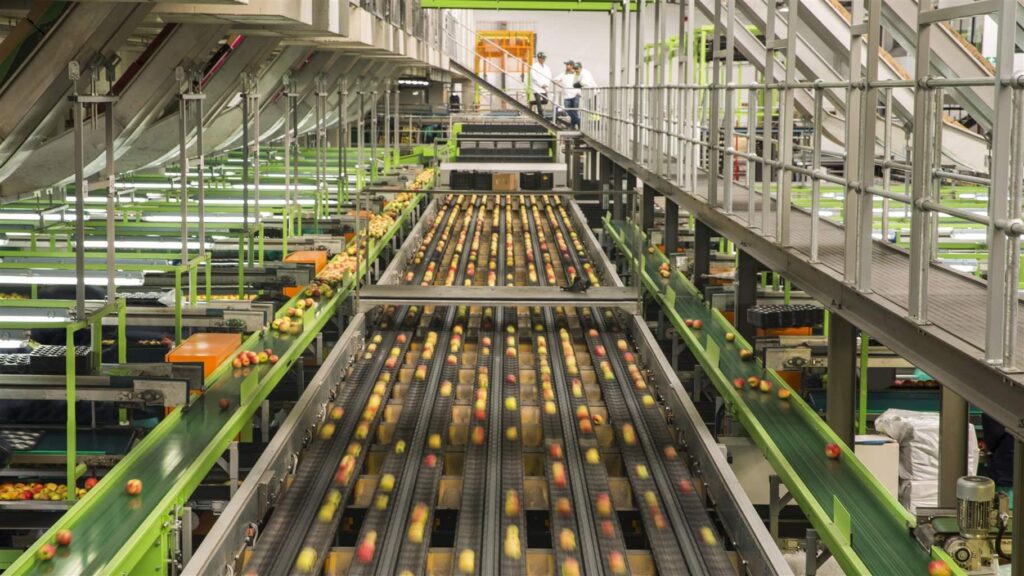In today’s fast-paced food industry, ensuring food safety is paramount. A robust food safety compliance system not only protects consumers but also safeguards businesses from legal repercussions and reputational damage. This article outlines the essential steps to create an effective food safety compliance system from the ground up, tailored for Australian businesses.
Understanding the Importance of Food Safety Compliance
Food safety compliance is not merely a regulatory requirement; it is a critical component of operational excellence. In Australia, the food industry is governed by stringent laws and regulations, including the Food Standards Australia New Zealand (FSANZ) guidelines. These regulations are designed to ensure that food is safe for consumption and that businesses uphold the highest standards of hygiene and quality.
Building a robust food safety compliance system from the ground up is a multifaceted process that requires dedication, knowledge, and continuous effort. By understanding the importance of food safety compliance, developing a comprehensive Food Safety Management Plan, providing effective training, and engaging with stakeholders, businesses can create a culture of safety that protects consumers and enhances operational excellence.
Failure to comply with food safety regulations can lead to severe consequences, including hefty fines, product recalls, and even criminal charges. Moreover, non-compliance can result in a loss of consumer trust, which can take years to rebuild. Therefore, establishing a robust compliance system is essential for any food business aiming for longevity and success.

Key Components of Food Safety Compliance
A comprehensive food safety compliance system comprises several key components, including risk assessment, training, monitoring, and documentation. Each of these elements plays a vital role in ensuring that food safety standards are met consistently. For instance, effective risk assessment involves identifying potential hazards in the food production process, whether biological, chemical, or physical, and implementing control measures to mitigate these risks. Training staff in food safety practices is equally crucial, as it empowers them to recognise and respond to potential issues proactively, fostering a culture of safety within the organisation.
Regulatory Framework
Understanding the regulatory framework is crucial for any food business. Familiarity with local, state, and national regulations helps ensure compliance and reduces the risk of legal issues. It is advisable to stay updated on any changes in legislation and to seek guidance from food safety experts when necessary. Additionally, businesses should consider engaging in regular audits and inspections, not only to comply with regulations but also to identify areas for improvement. This proactive approach not only enhances compliance but also elevates the overall quality of the food being produced, which can lead to increased customer satisfaction and loyalty.
Furthermore, the regulatory landscape is continually evolving, influenced by emerging scientific research and public health concerns. For example, recent developments in foodborne illness outbreaks have prompted authorities to tighten regulations around traceability and transparency in the food supply chain. As such, businesses must not only comply with existing laws but also anticipate future changes and adapt their practices accordingly. This forward-thinking mindset not only safeguards public health but also positions businesses as leaders in the industry, demonstrating a commitment to excellence and responsibility.
Developing a Food Safety Management Plan
A Food Safety Management Plan (FSMP) is a critical document that outlines the procedures and policies a business will implement to ensure food safety. Developing an FSMP involves several steps, including identifying potential hazards, establishing control measures, and creating monitoring procedures.
Identifying Hazards
The first step in developing an FSMP is to conduct a thorough hazard analysis. This involves identifying biological, chemical, and physical hazards that could potentially compromise food safety. Common hazards include bacteria, allergens, and foreign objects. By identifying these risks, businesses can take proactive measures to mitigate them.
Establishing Control Measures
Once hazards have been identified, the next step is to establish control measures. These measures should be specific, measurable, and achievable. For instance, implementing proper cooking temperatures, maintaining hygiene standards, and ensuring proper storage conditions are all essential control measures that can significantly reduce the risk of foodborne illnesses.
Monitoring Procedures
Monitoring is a critical aspect of any FSMP. Regular checks should be conducted to ensure that control measures are being adhered to. This may include temperature checks, visual inspections, and microbiological testing. Documenting these monitoring activities is essential for demonstrating compliance and for identifying areas for improvement. Read more about temperature at https://www.ncbi.nlm.nih.gov/books/NBK331/
Training and Education
Effective training and education are fundamental to the success of a food safety compliance system. All staff members, from management to front-line workers, must understand their roles and responsibilities regarding food safety.
Creating a Training Programme
A comprehensive training programme should cover various aspects of food safety, including hygiene practices, allergen management, and proper food handling techniques. Training should be tailored to the specific needs of the business and updated regularly to reflect any changes in regulations or procedures.
Continuous Education
Food safety is an ever-evolving field, and continuous education is vital. Encourage staff to attend workshops, seminars, and courses related to food safety. This not only enhances their knowledge but also fosters a culture of safety within the organisation.
Implementing Monitoring and Verification Systems
Monitoring and verification are essential components of a food safety compliance system. These processes help ensure that the established control measures are effective and that the FSMP is being followed correctly.
Internal Audits
Conducting regular internal audits is a proactive way to assess compliance with food safety standards. These audits should evaluate all aspects of the FSMP, from hazard analysis to staff training. Audits can help identify gaps in compliance and areas for improvement, allowing businesses to take corrective action before issues arise.
External Verification
In addition to internal audits, seeking external verification from third-party organisations can provide an added layer of assurance. Certification from recognised food safety bodies can enhance credibility and demonstrate a commitment to food safety standards.
Documentation and Record Keeping
Accurate documentation and record keeping are vital for demonstrating compliance and for tracking the effectiveness of the food safety management system. All procedures, monitoring activities, and training sessions should be documented clearly and systematically.
Maintaining Records
Records should be maintained for all aspects of the FSMP, including hazard analyses, monitoring activities, training sessions, and audit results. These records should be easily accessible and organised in a manner that allows for quick retrieval during inspections or audits.
Utilising Technology
Modern technology can significantly streamline documentation and record-keeping processes. Various software solutions are available that can automate record-keeping, making it easier to track compliance and generate reports. Embracing technology can enhance efficiency and reduce the risk of human error. Click here to find more about efficiency.
Engaging with Stakeholders
Engaging with stakeholders, including suppliers, customers, and regulatory bodies, is essential for a successful food safety compliance system. Building strong relationships can facilitate communication and collaboration, ultimately leading to improved food safety outcomes.
Supplier Management
Establishing clear expectations with suppliers regarding food safety standards is crucial. Regular communication and audits of suppliers can help ensure that they adhere to the same high standards that the business upholds. This collaborative approach can mitigate risks associated with the supply chain.
Customer Communication
Transparent communication with customers regarding food safety practices can enhance trust and loyalty. Providing information about food sourcing, preparation methods, and safety measures can reassure customers and demonstrate a commitment to quality.
Continuous Improvement and Adaptation
Food safety compliance is not a one-time effort but an ongoing process. Continuous improvement is essential to adapt to changing regulations, emerging risks, and evolving consumer expectations.
Feedback Mechanisms
Implementing feedback mechanisms can provide valuable insights into the effectiveness of the food safety compliance system. Encouraging staff to report concerns or suggestions can foster a culture of safety and continuous improvement.
Staying Informed
Staying informed about industry trends, regulatory changes, and emerging food safety issues is crucial. Regularly reviewing and updating the FSMP based on new information ensures that the compliance system remains relevant and effective.
Conclusion

Ultimately, a strong food safety compliance system not only safeguards public health but also contributes to the long-term success and reputation of a food business in Australia. Investing in food safety is not just a regulatory obligation; it is a commitment to quality and consumer trust.
Read more at: Understanding Food Safety Standards Compliance for Small Businesses

